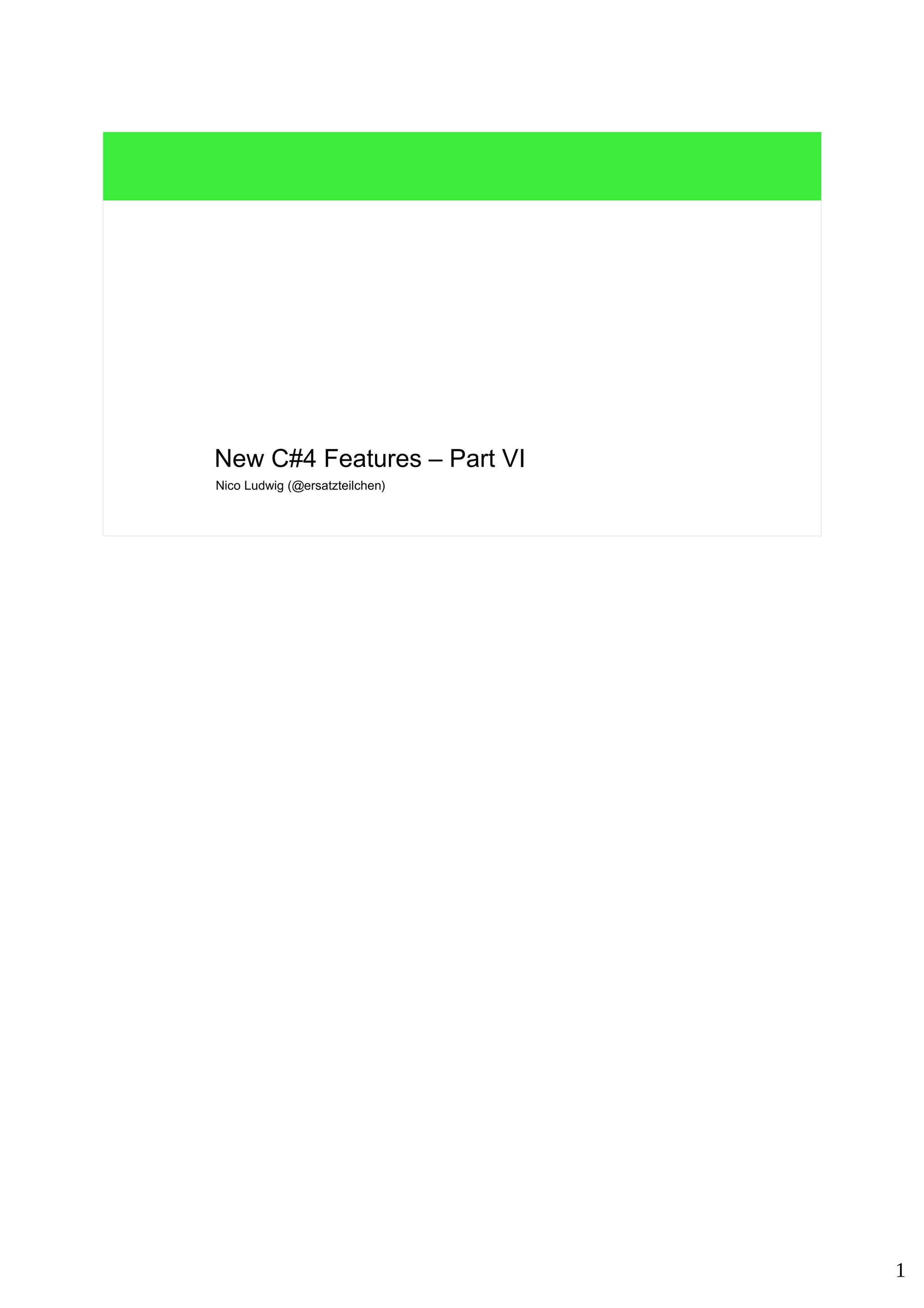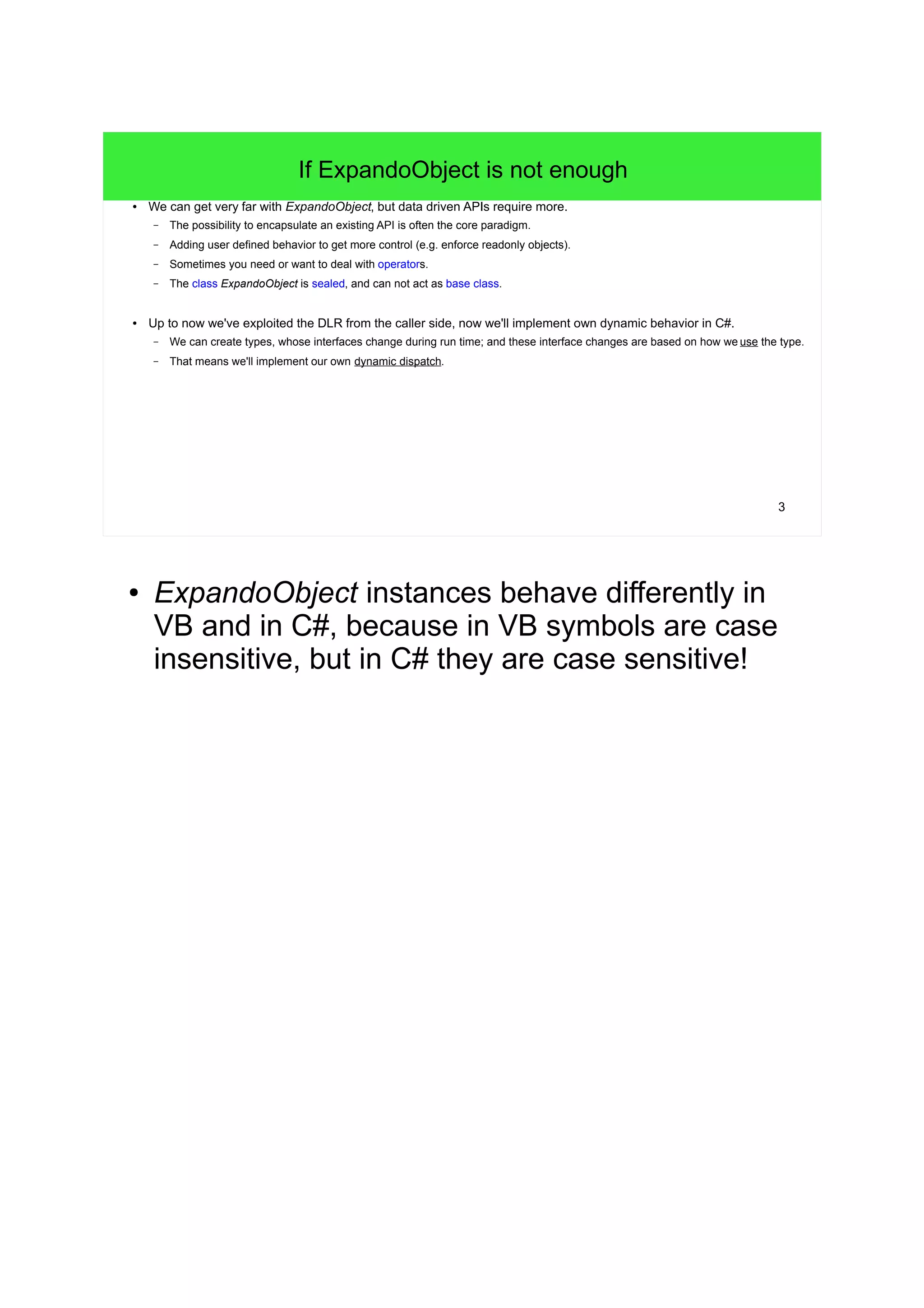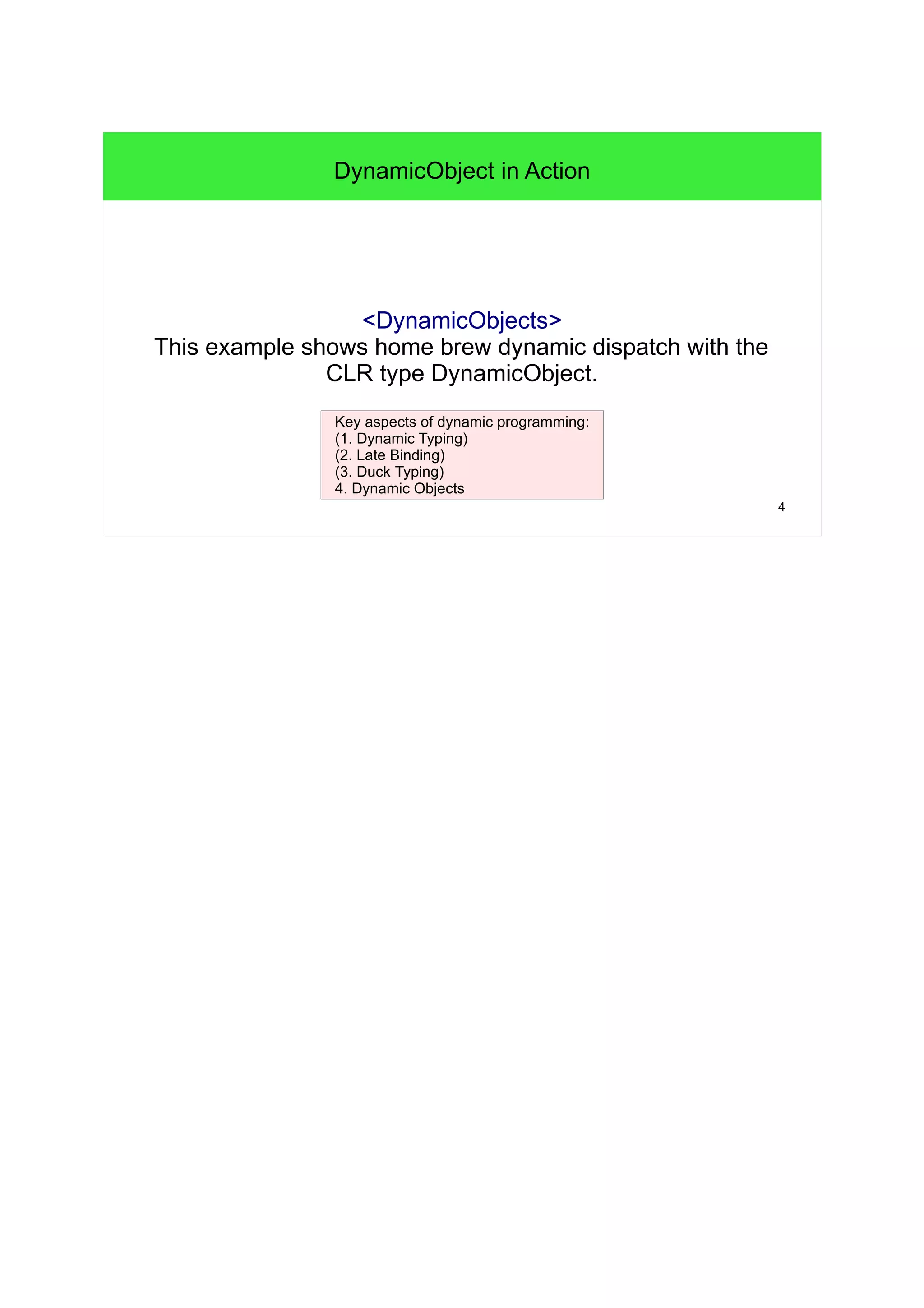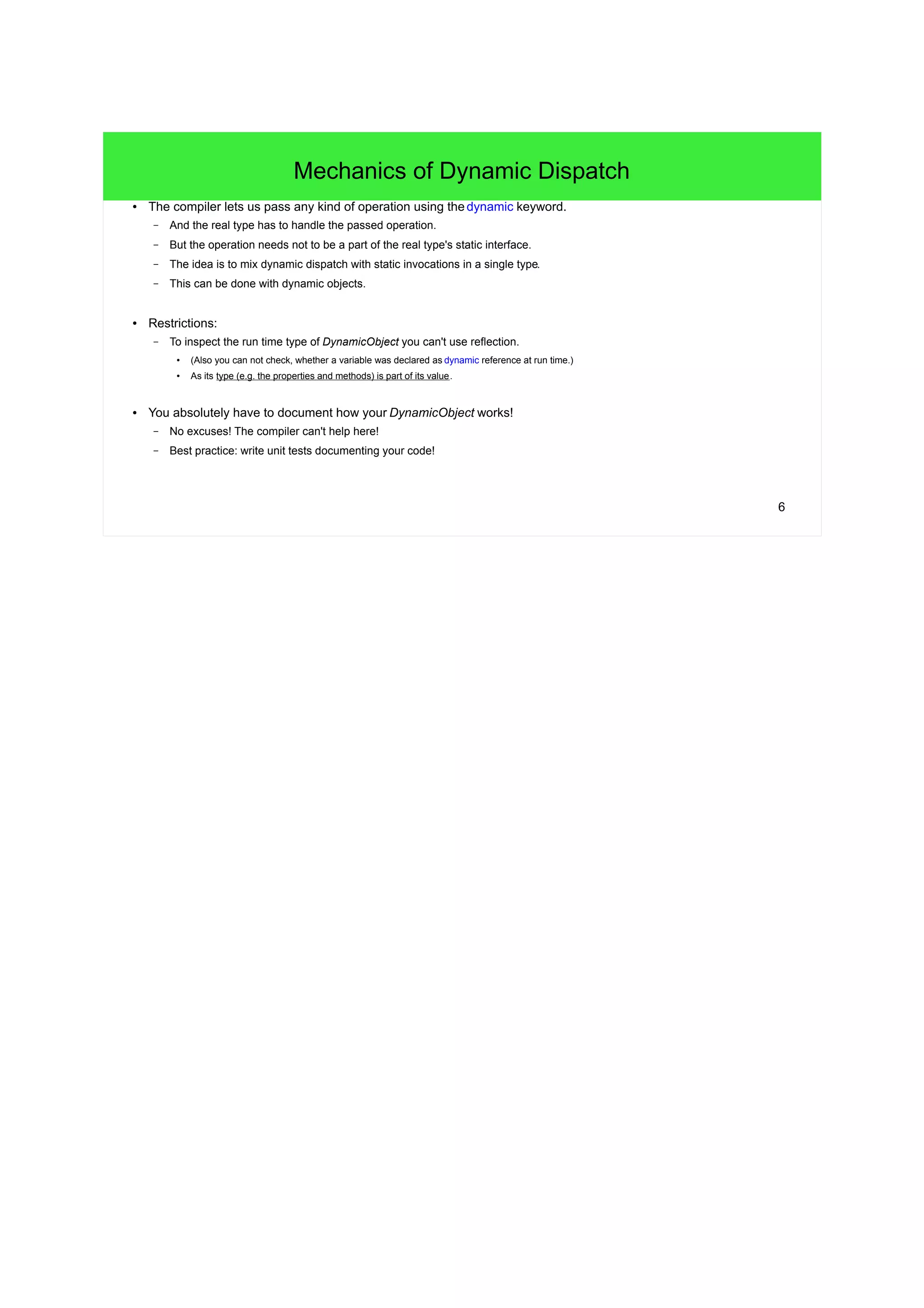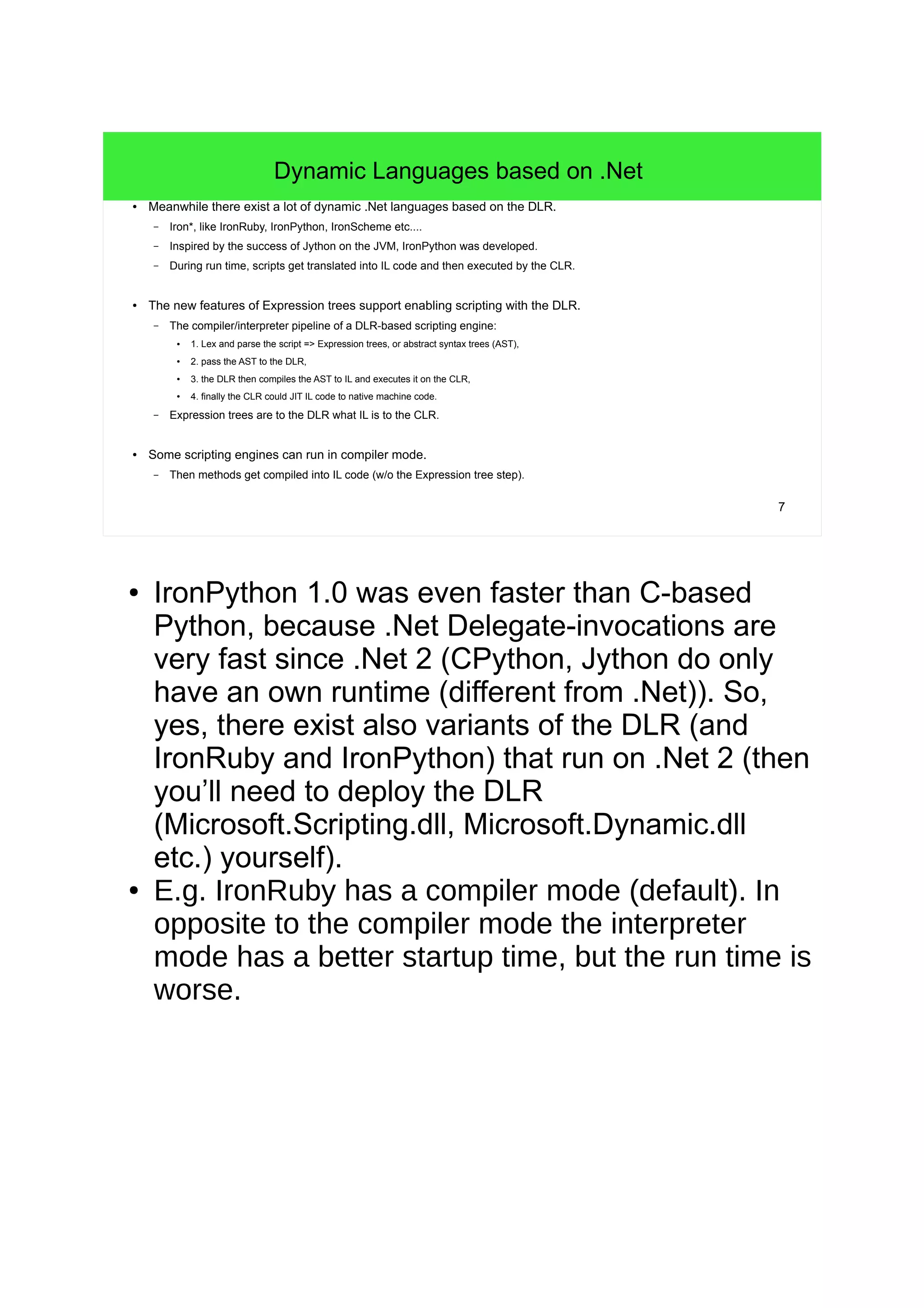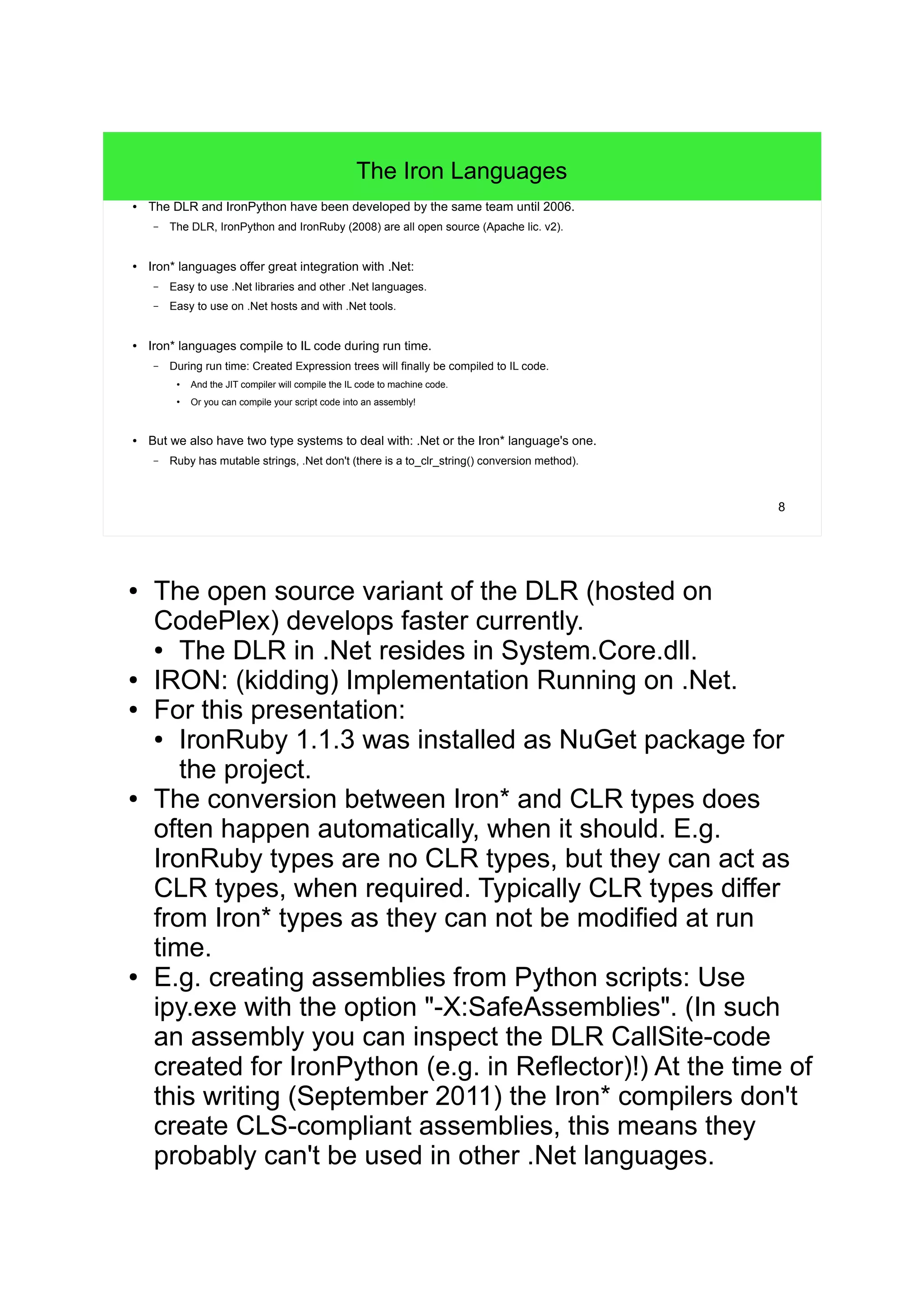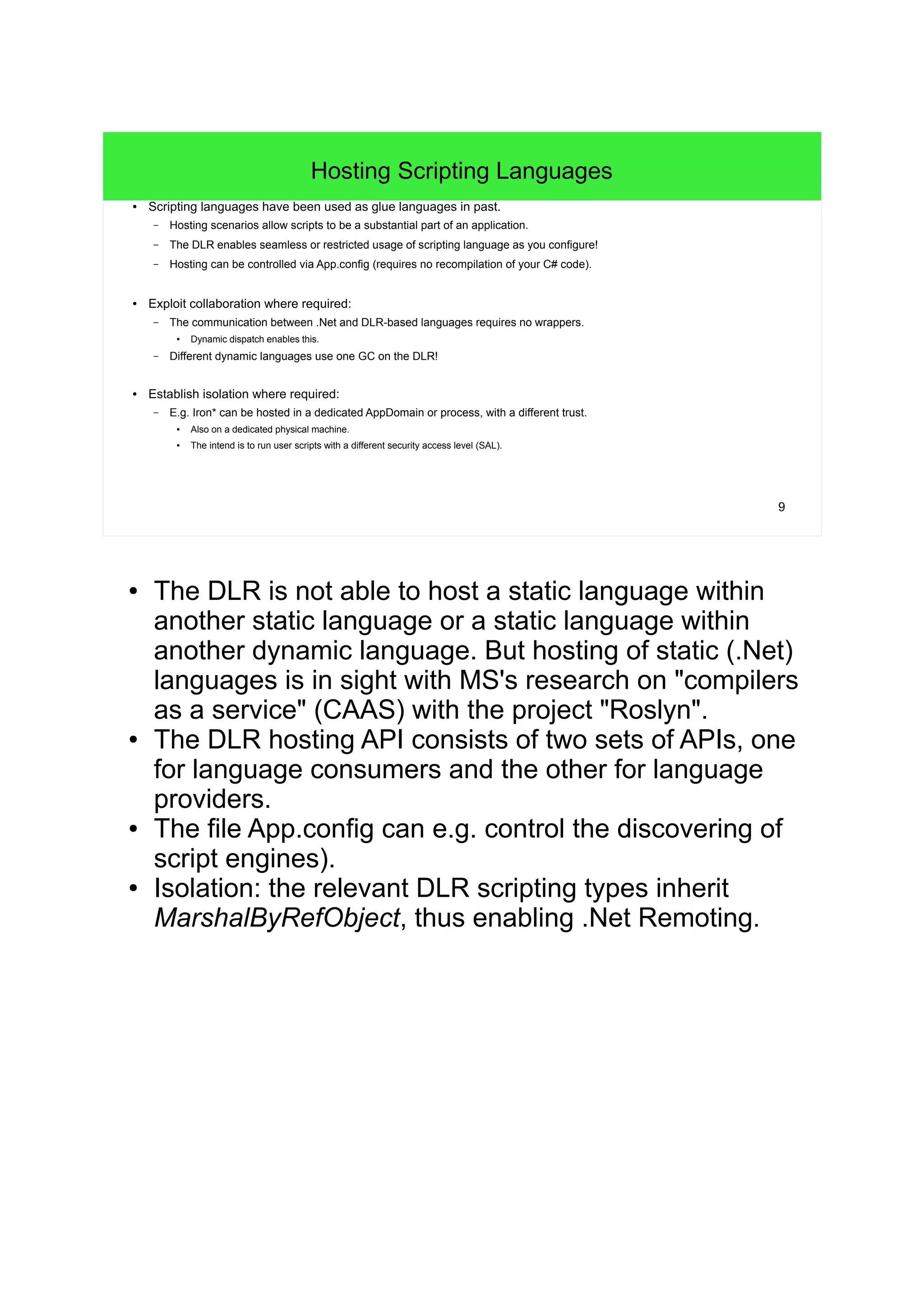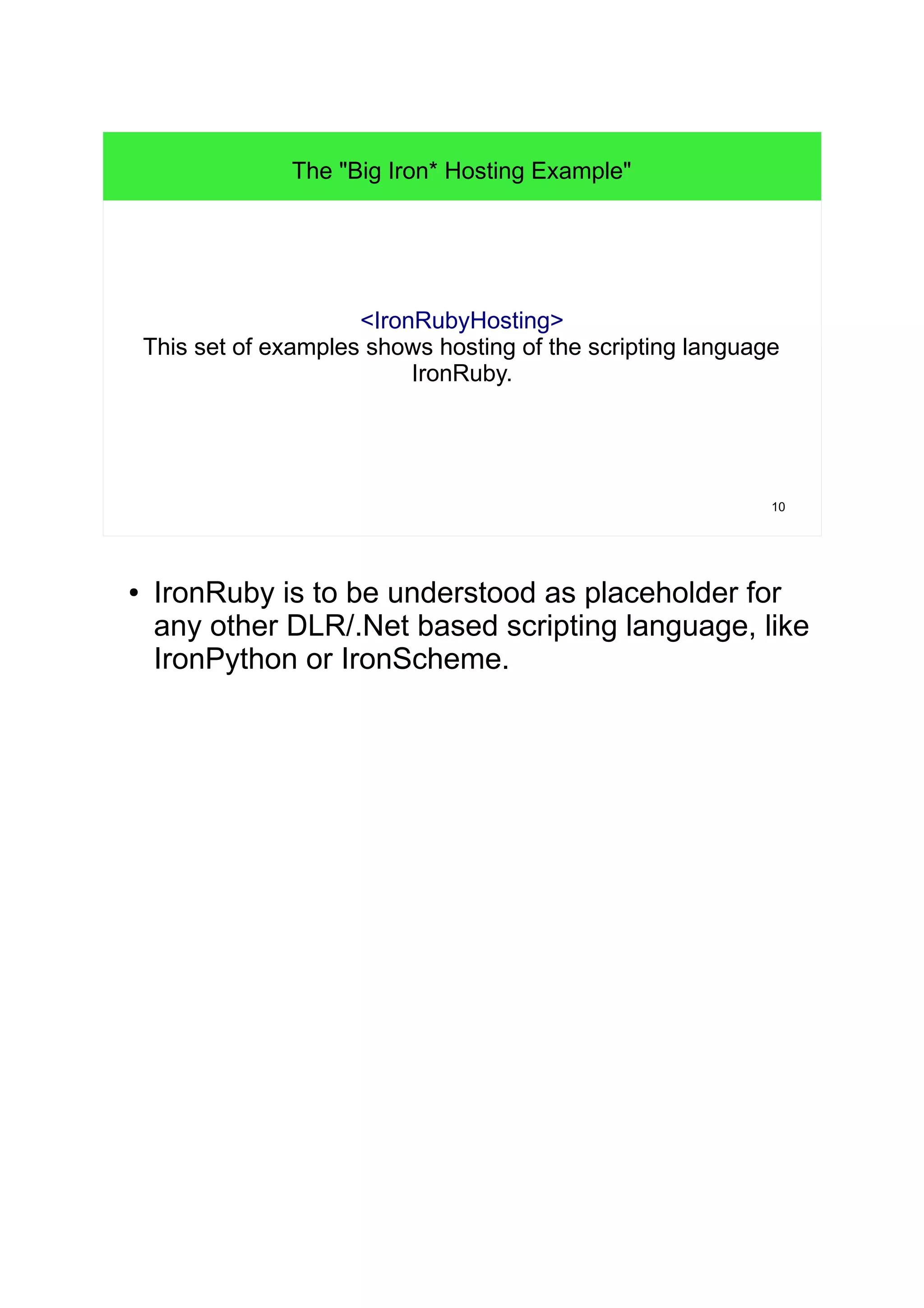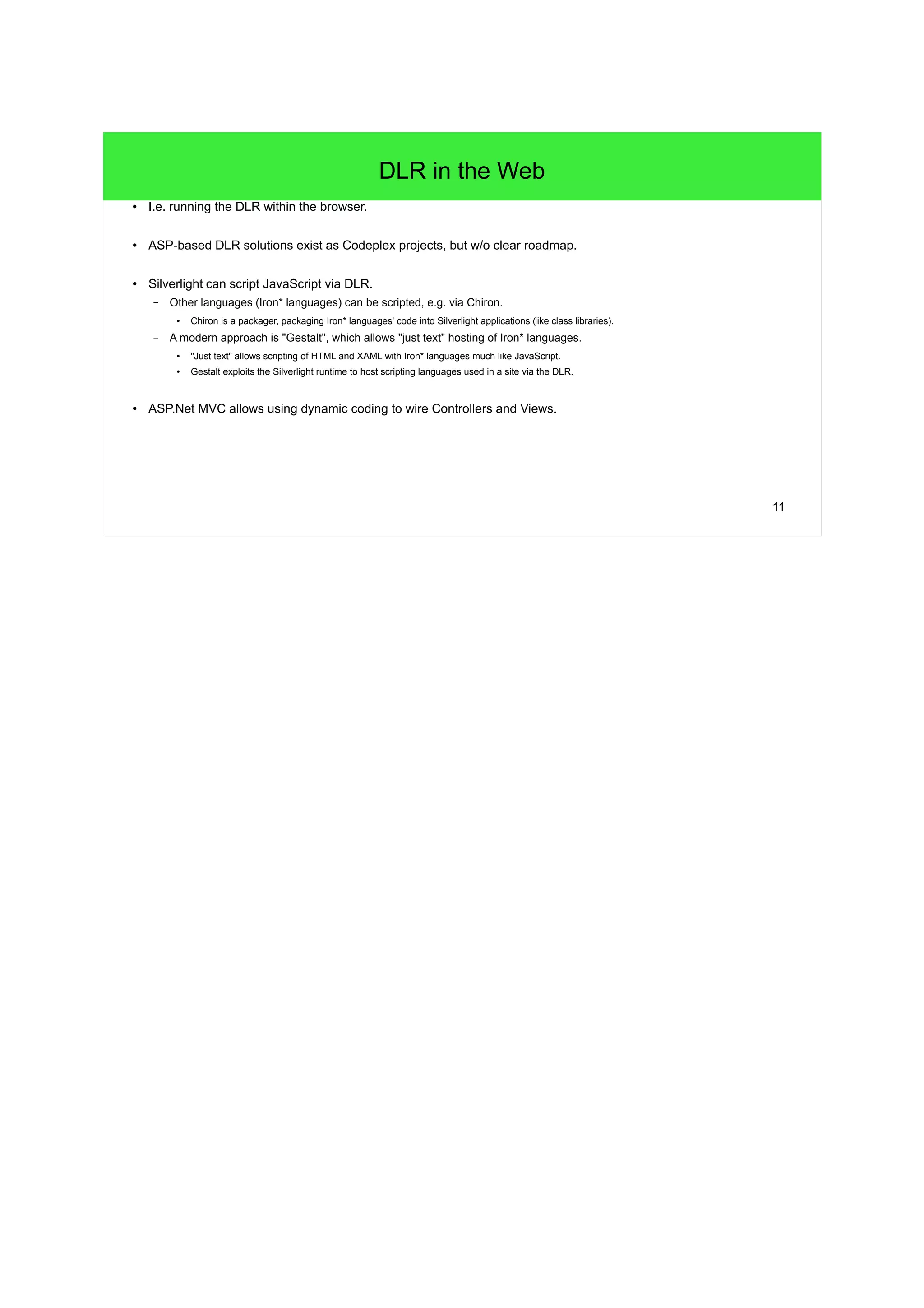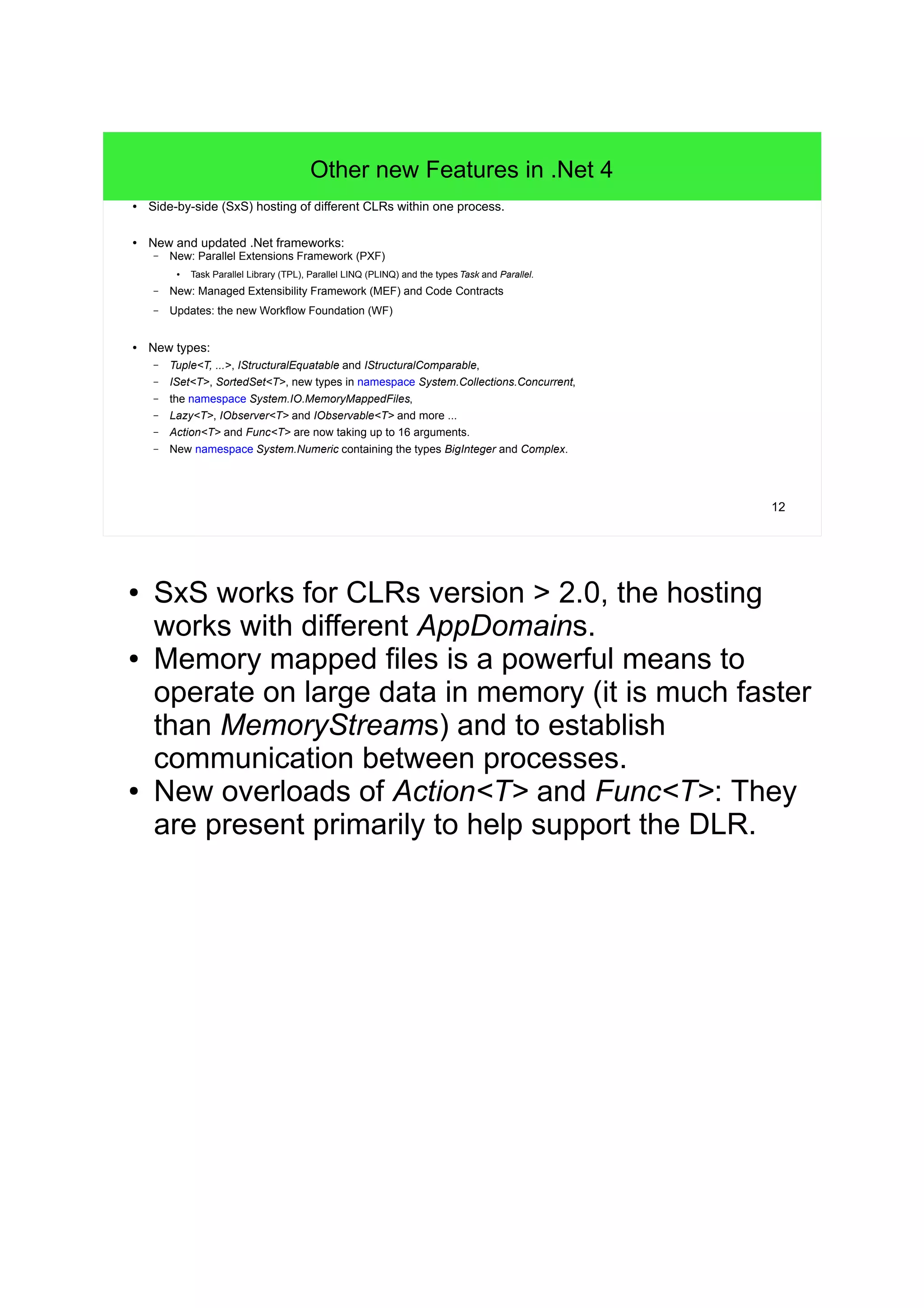This document discusses new features in C# 4 including home-brew dynamic dispatch using the DynamicObject class. It allows implementing custom dynamic behavior by overriding methods like TryInvokeMember. The document also covers hosting scripting languages with the Dynamic Language Runtime (DLR), including IronPython, IronRuby, and IronScheme. Dynamic dispatch enables seamless collaboration and controlled isolation between .NET and DLR-based languages.
